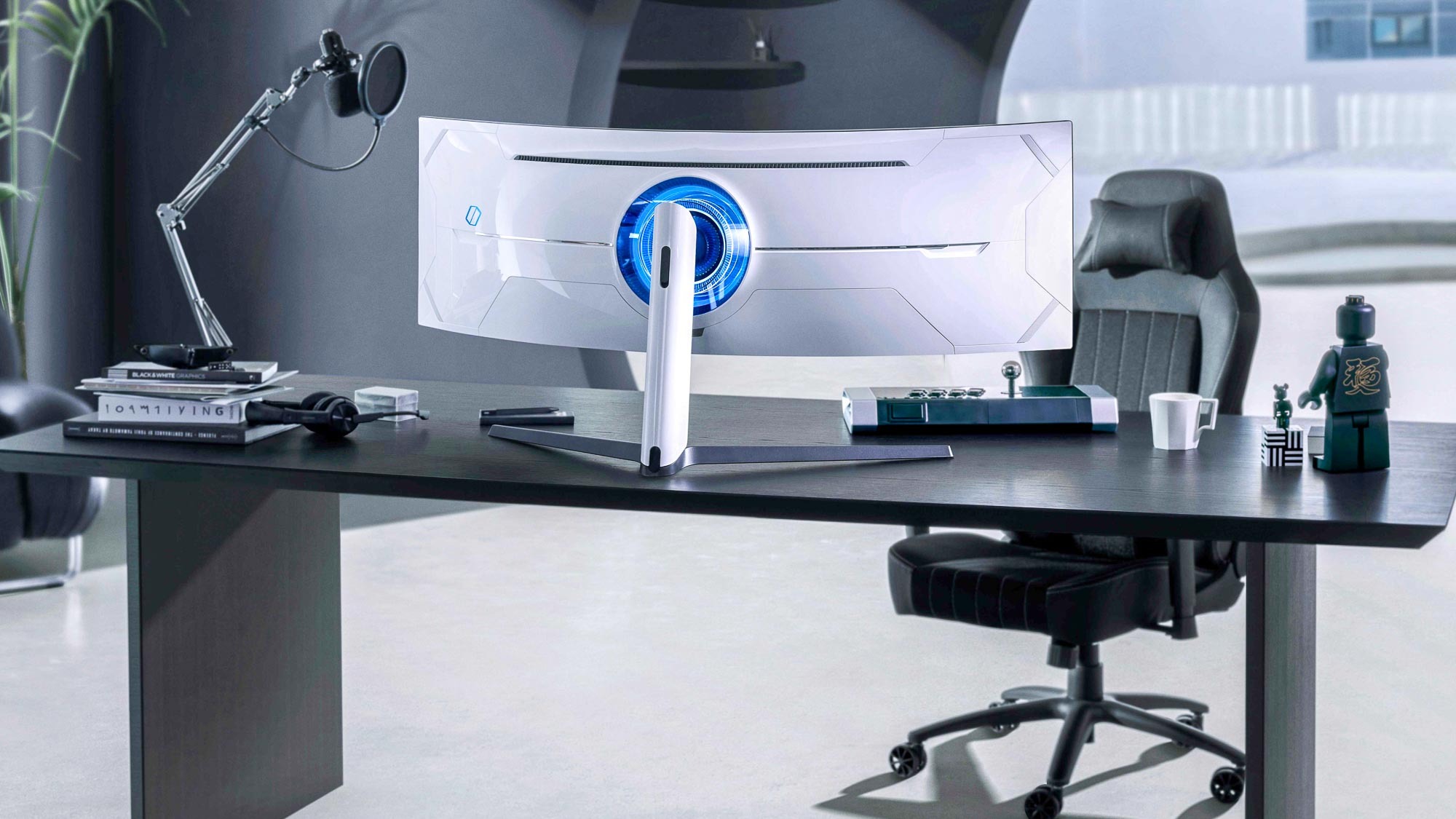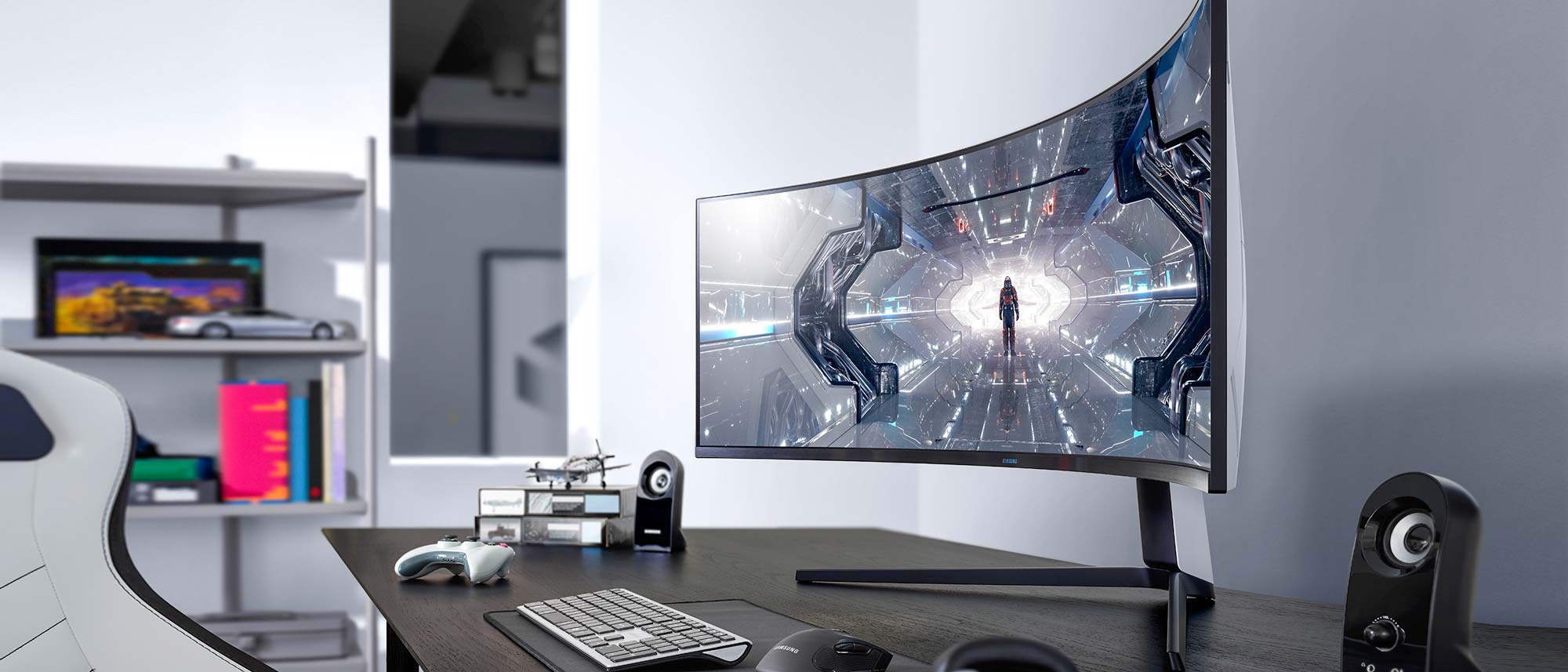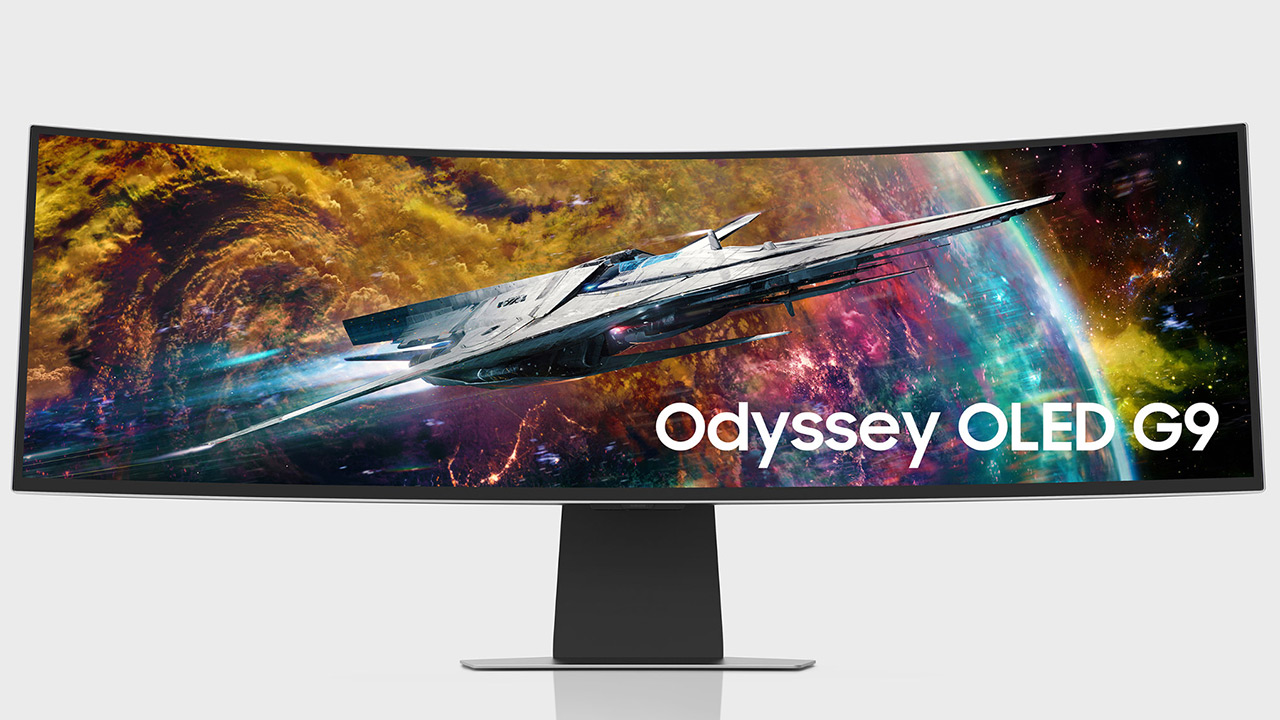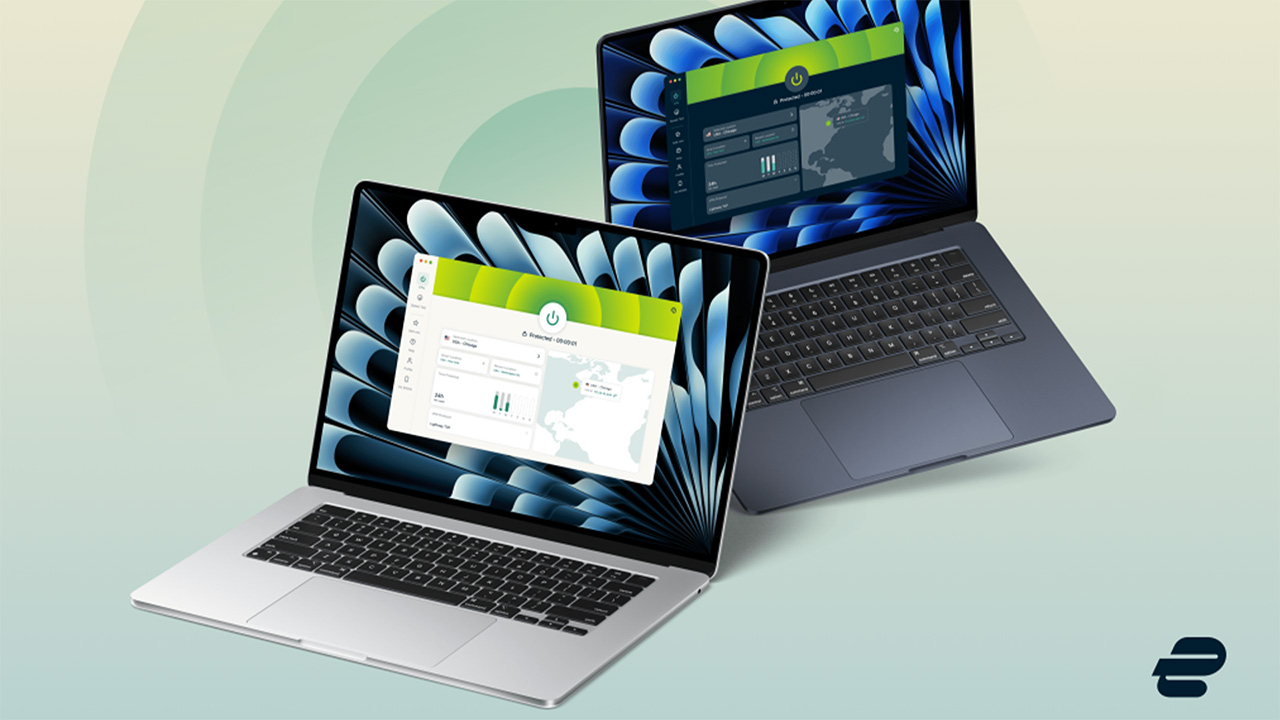I used this ultrawide monitor for a year — and it's transformed how I work
I owned a 32:9 screen for a year and it was great for both work and gaming

The Samsung Odyssey G9 is one of the best gaming monitors in 2023. Provided you have a desk that’s roughly the size of an aircraft hangar, this super ultrawide display’s gamer-friendly features are hard to top. So why did I own its Mini-LED sibling (the Neo G9) for close to a year and almost never play games on it?
I’m an idiot, that’s why.
Alright, there’s a bit more to it than me being a simpleton. Part of the problem with the Samsung Odyssey Neo G9 is that it’s actually far too good at being a work monitor. Though it’s advertised as a high-end gaming display, its 32:9 aspect ratio makes it perfect for productivity.
I can’t stress just how wonderful the Neo G9 is as a work monitor. While those 49-inch / 32:9 dimensions seem like ludicrous overkill, in reality, those figures give you a display that’s a dream to write, edit and multi-task on.
Former Tom’s Guide News Editor Imad Khan has previously written about how a 32:9 screen transformed how he worked, and I’ll throw in my two cents by agreeing that owning such a display can prove a godsend for work tasks.
Ultrawide of the mark

In a previous life, I used to spend most of my waking hours tweaking images in Photoshop and tinkering with videos via Adobe Premiere Pro. As someone who likes to regularly spin plates, I’d normally have both of these applications open at the same time — and upwards of 15 Google Chrome windows. That’s where the 32:9 form factor proves its worth.
My math might be shaky, but owning a single 32:9 monitor is basically like having two 16:9 displays placed side by side. Imagine that widescreen monitor you may well be reading this article on, then double it. The added screen real-estate the super ultrawide aspect ratio provides is a game-changer when it comes to juggling multiple work tasks.
Get instant access to breaking news, the hottest reviews, great deals and helpful tips.
The ultrawide aspect ratio is a game-changer when it comes to juggling multiple work tasks.
Most modern white collar jobs require a whole lot of juggling. CMS systems, social media tabs and Slack all have to live alongside each other. On a normal 16:9 monitor, this is challenging. On one of the best business laptops, it can be a flat out headache. Turns out, having 49 inches of screen in front of you makes work life a good deal easier.
With a 32:9 ultrawide monitor, it’s easy to have multiple internet windows and various apps on-screen at the same time. There’s so much display to deal with, the mild annoyance of having to resize or snap tabs into place becomes an irrelevance. If you want to access and switch between work programs in an instant, a super ultrawide monitor is the killer app you never knew you needed.
All work and no play

At the same time, using monitors like the G9 or Neo G9 almost exclusively as a work monitor is a bit silly. These are seriously expensive displays, and the sheer size of their screens is matched by their gaming-focused features. Boasting HDR2000 panels, they can be overclocked to hit 240Hz, they get super bright in HDR mode and both boast response times of less than 1ms. On paper, they’re phenomenal gaming monitors.
And yet, despite all those drool-worthy stats and the fact I had some great gaming experiences on it — none more so than playing Doom Eternal at near 200 fps — I didn't always love playing games on my Neo G9.
While its Mini-LED tech serves up black levels that are fairly close to the best OLED TVs, I found the Neo G9’s screen uniformity to be poor.
Panning the camera across the sky in many of the best PC games, ‘Dirty Screen Effect’ is all too visible. Granted, I have obsessive eyes, but when you spend over $2K on a monitor, you expect near perfect image quality, not inconsistent brightness levels while moving the camera around in GTA 5.
First-person shooters and racing games can feel incredibly immersive on a 32:9 screen, yet for story-driven games, aggressive letterboxing via black bars all but ruin the experience.
The other, bigger issue, is that there are still so few games that fully take advantage of super ultrawide. First-person shooters and racing games can feel incredibly immersive on a 32:9 screen, yet for story-driven games, aggressive letterboxing via black bars all but ruin the experience.
It’s hardly a surprising flaw when you consider 21:9 monitors — which are a good deal more popular than 32:9 displays — also regularly show black bars during cutscenes because most cinematics still lack full ultrawide support.
Not that any of the gripes above are dissuading Samsung from continuing to embrace ultrawide as a format. The company is releasing both a 32:9 display with an oled screen and the world’s first 8K ultrawide gaming monitor. Yup, you’re gonna need a bigger boat / desk.
While I had slight issues with it, I do regret selling my 32:9 screen. As a work display, it was an expensive godsend, but I couldn’t quite get over its (admittedly minor) shortcomings as a gaming monitor. I really do hate my horribly observant eyes.

As for my current monitor setup, that’s even more expensive… and a smidge less practical. I’m currently typing this article on a PC with dual monitors. Said displays are the Alienware 34 QD-OLED and a 48-inch LG C2 OLED TV. Yes, I use a 4K TV as a monitor; you should try it.
Individually, both of these displays beat the Neo G9 because OLED as a technology still can’t be topped when it comes to black levels and peerless screen uniformity. Yet even combined they can’t match Samsung’s super ultrawides for working on.
If you want to up your productivity and have the odd mind-blowing race in Forza Horizon 5, I’d highly recommend giving a 32:9 monitor a go. Just don’t go looking for those minor gaming imperfections like I did.
More from Tom's Guide
- Samsung Odyssey G9 monitor review: Ridiculous in the best possible way
- The best monitors right now
- Samsung just announced a massive 98-inch QLED TV — for a 'mid-range' price

Dave is a computing editor at Tom’s Guide and covers everything from cutting edge laptops to ultrawide monitors. When he’s not worrying about dead pixels, Dave enjoys regularly rebuilding his PC for absolutely no reason at all. In a previous life, he worked as a video game journalist for 15 years, with bylines across GamesRadar+, PC Gamer and TechRadar. Despite owning a graphics card that costs roughly the same as your average used car, he still enjoys gaming on the go and is regularly glued to his Switch. Away from tech, most of Dave’s time is taken up by walking his husky, buying new TVs at an embarrassing rate and obsessing over his beloved Arsenal.
